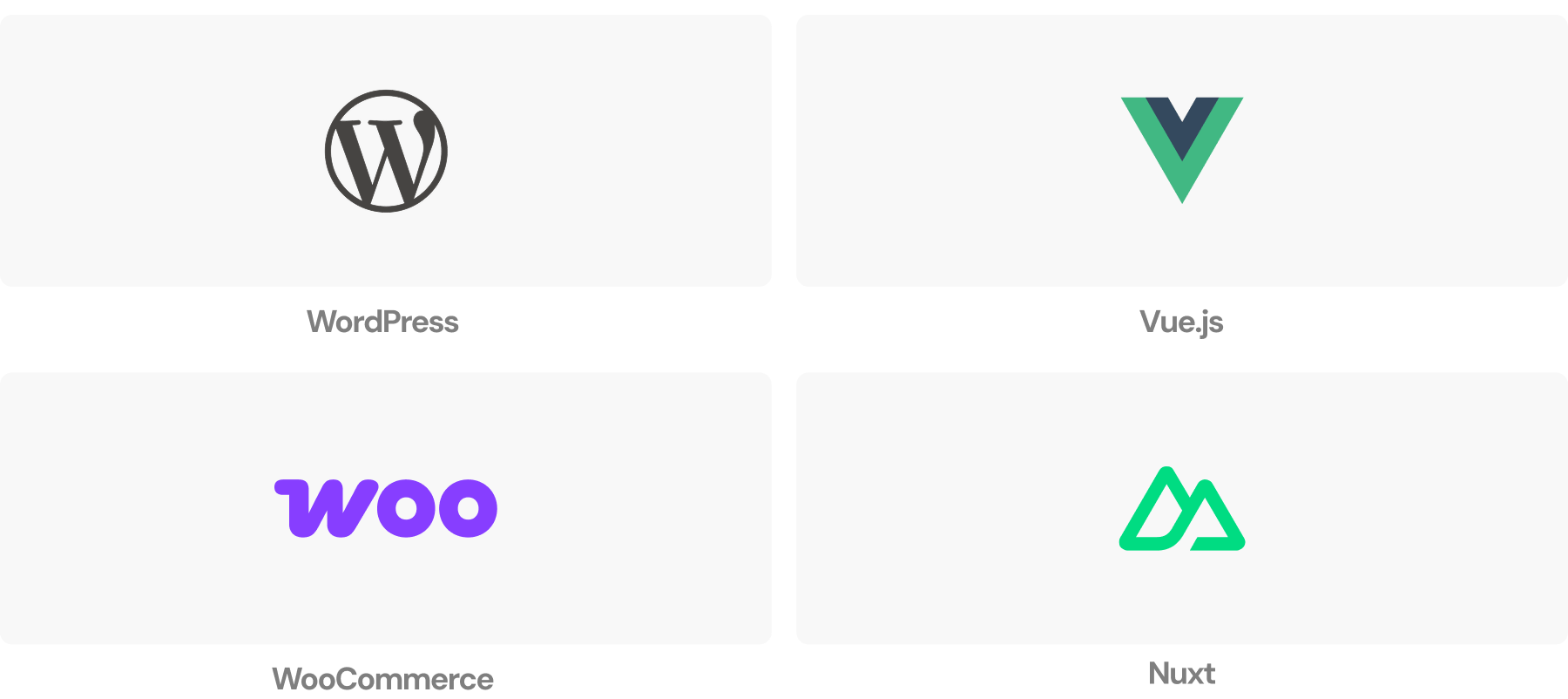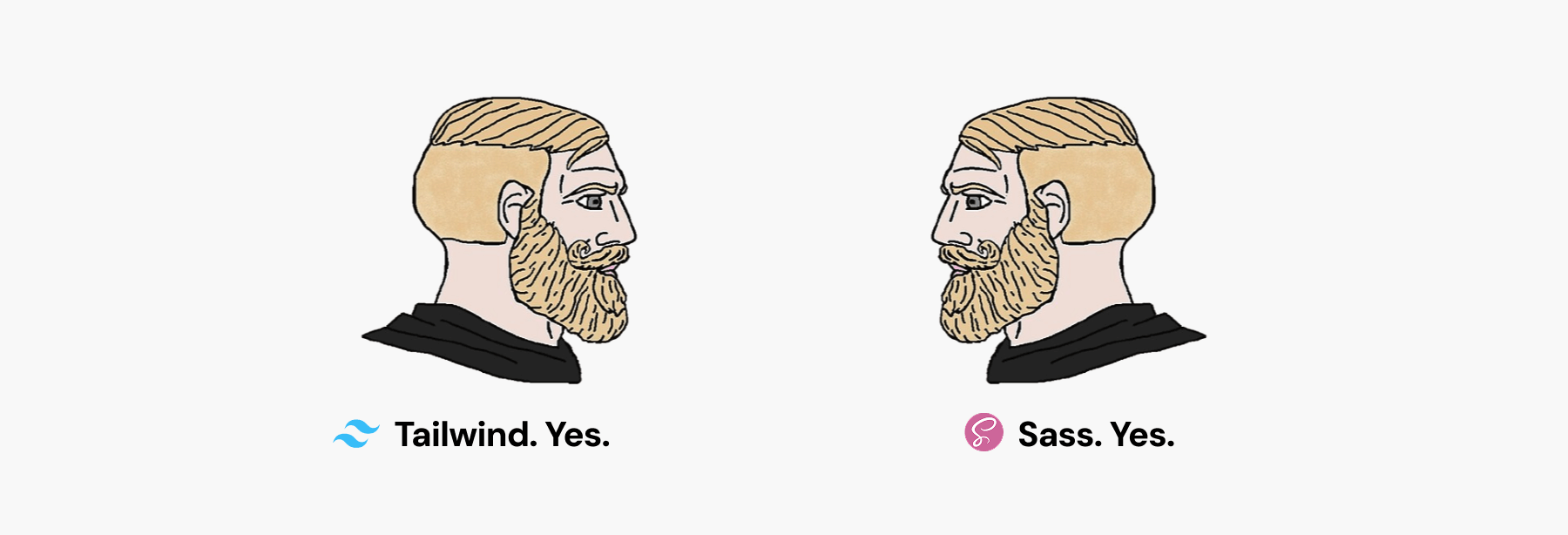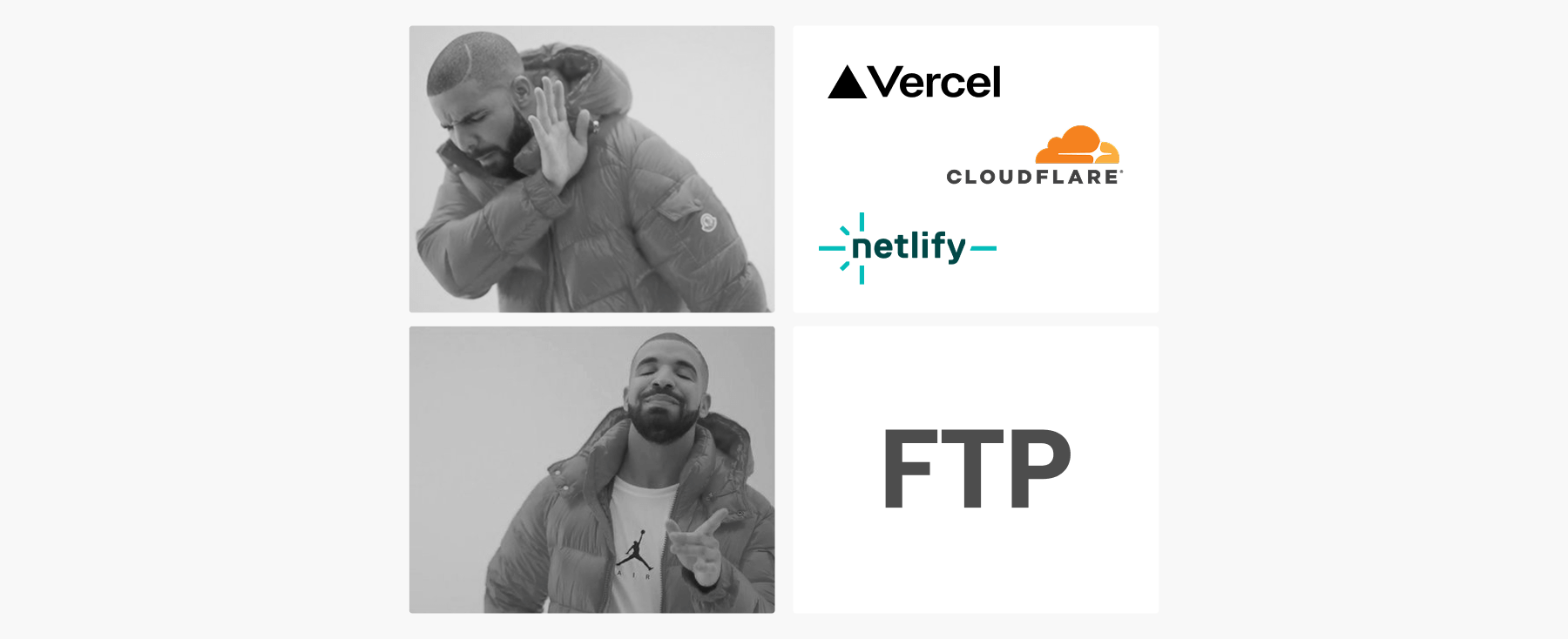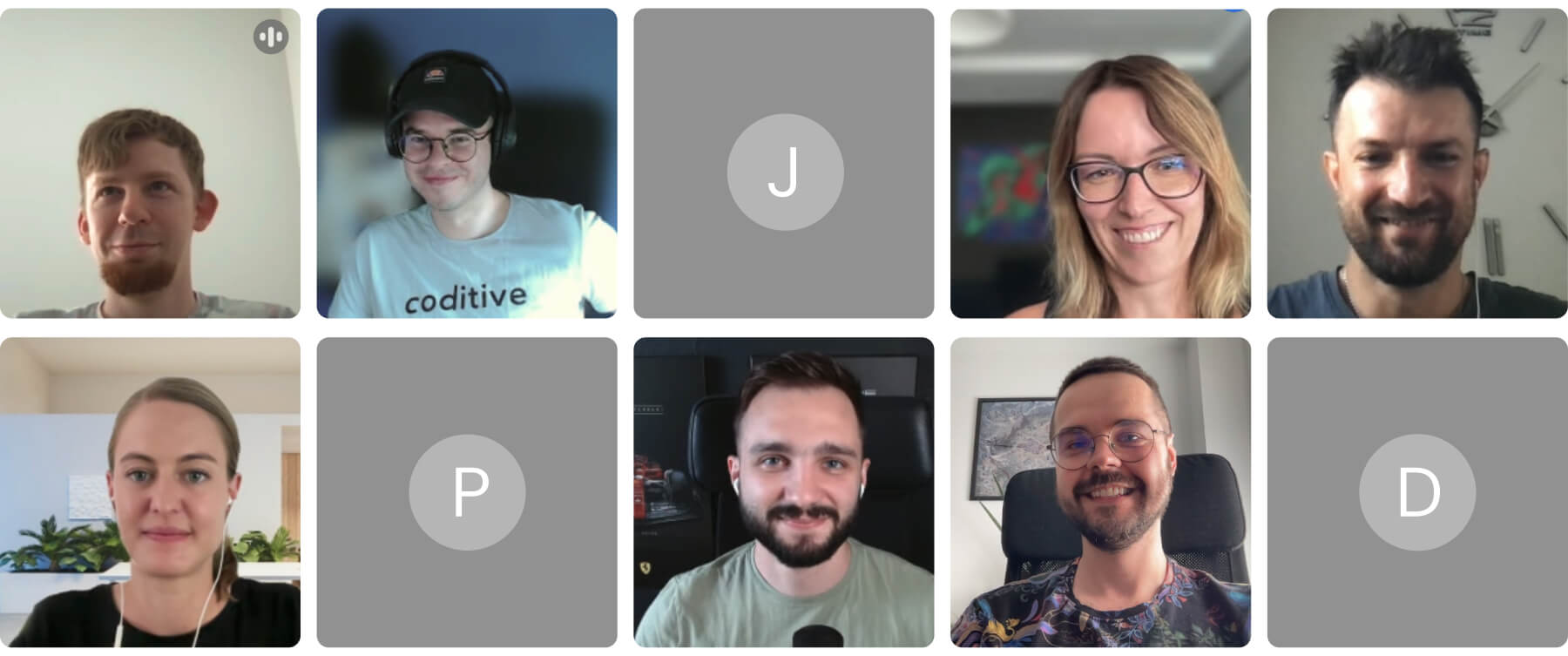Every year, we take a good hard look at our tech stack. Our two key criteria?
💪 First, stick with what we crush at.
💸 Second, focus on technologies that brings our Clients real business value.
Honestly, we’re not ones for chasing every shiny new trend. We’ve built our foundation on solid ground, and we prefer to refine and add tools where they genuinely amplify our abilities.
We believe in specialization, pragmatism, and a holistic approach. That’s how we craft seriously good software. Our core expertise lies in two technologies: WordPress and Vue.js.
When we say WordPress, we’re talking about building high-quality websites – whether it’s business sites, marketing pages, or complex content platforms. But WordPress is more than just a CMS. Thanks to its powerful built-in features, we also use it as a backend for web applications when the project calls for it. And, of course, WooCommerce plays a crucial role in delivering eCommerce solutions. Simply put, we use WordPress as the engine behind websites, eCommerce stores, and web apps.
As for Vue.js, we use it in two main ways. The first is integrating Vue.js with WordPress to create dynamic frontends, while retaining WordPress’s content management capabilities. Second, we’re deep into Nuxt, a Vue.js based framework that has become a core part of our stack. Over the years, we’ve become Nuxt experts, and we’re now official Nuxt partners, delivering high-performance solutions.

Want to see how we got here? Check out these stories:
Now that we’ve covered our main areas of expertise, let’s dive into the specifics – our tech stack for 2025 and the tools, technologies, and languages that power our solutions.
Coditive Development Tech Stack for 2025
Programming: Languages and Our Approach
First up, the basics: PHP and JavaScript are our bread and butter.
We’re sticklers for quality. Coding standards aren’t just guidelines for us – they’re our bible. We’re obsessed with clean, readable, and maintainable code. It’s not just about making things work, it’s about making them work beautifully.
That’s why we use for example linters for every programming language and framework to keep everything in check (and psttt, we’re putting together an ebook soon to show you exactly how we set it all up – stay tuned!).
So yeah, honestly, we’re a team that geeks out about well-written code. We believe that good code is a craft, and we take pride in doing it right. It’s not just about delivering a project, it’s about building something that delivers real value to our Clients, something we’re genuinely passionate about.
WordPress Toolkit
We’ve built our own starter WordPress boilerplate (starter for theme and plugin development) incorporating modern coding best practices.
Composer and NPM are essential parts of our workflow, helping us manage dependencies efficiently.
For WordPress development, we borrow some of Laravel’s best tricks and tools. Our custom theme uses Laravel Blade, which keeps our templates clean and easy to manage.

Our latest theme version now includes Vite, a tool widely adopted in JavaScript frameworks. The development experience is outstanding – fast builds and instant hot module replacement have seriously boosted our workflow. If you’d like to check, how to integrate WordPress with Vite, check out this post by our CTO.
We’re all about building solutions that last – flexible, scalable, and built on solid foundations. That’s why we love Advanced Custom Fields (ACF), often paired with Gutenberg, for structured and maintainable WordPress sites.
For clients wanting Full Site Editing (FSE), we use it where it makes sense. We weigh each project individually to ensure the best fit.
Frontend Development
We tailor our styling to each project, using:
- Sass (SCSS) + BEM methodology for clean, maintainable styles
- Tailwind CSS for rapid, utility-first styling (…and also clean and maintainable)

Here’s the inside scoop: this isn’t just a business decision. We’ve got two camps of frontend devs, each with their favorite approach, leading to a never-ending (but friendly!) debate. Since there’s no clear winner, we offer both. That way, we can match devs to projects where they’ll shine.
We speed things up with component libraries like shadcn/ui and Nuxt UI, which offer high-quality, pre-built components.
For design collaboration, we’re often in Figma and Sketch, ensuring a smooth handoff between design and development.
Backend for Vue and Nuxt Projects
When we’re not using WordPress in a headless setup, our go-to backend solution is Supabase. It excels in providing flexible and scalable database solutions, robust user authentication, and efficient file storage, enabling us to rapidly develop sophisticated web applications.

Now, here’s a little behind-the-scenes tidbit: before Supabase, we were deep into Firebase. Like, really deep. We built a lot of our internal tools and client projects on it. It was powerful, no doubt. However, we started running into this vendor lock-in issue, where we felt a bit trapped. If Firebase changed something, we were kinda stuck with it.
Despite the fact that many of our solutions, including some internal tools, still rely on Firebase today (more about this later), we started looking for alternatives. And Supabase just clicked. It gives us the same kind of flexibility and speed, but without that feeling of being tied down. Plus, it’s open-source, which we really dig. So yeah, Supabase has become our backend workhorse.

Talking about backend we also have experience with other CMS platforms like Strapi and Sanity. Additionally, Nuxt Content along with Nuxt Studio, which is Markdown-based, has proven to be a great content management tool for Nuxt projects.
Git, Hosting and Deployment
Despite being in 2025, FTP remains dominant for WordPress hosting. While it may not be the most modern approach, it’s often the reality.

For Vue and Nuxt projects, we love Netlify, Vercel, and Cloudflare. Our priority is to have seamless and automated website deployments, and those platforms make that possible through Git automation. Recognizing the limitations of FTP in this regard, we’ve developed our own automated deployment process, significantly speeding up and streamlining website deployments.
And in the Cloudflare world, we use Nuxt Hub to simplify things.
For version control, we rely on GitHub and Bitbucket. They keep our code organized and let us work on multiple features without stepping on each other’s toes. And hey, if you’re a GitLab fan, we can roll with that too.
AI Tools in Development
We use Cursor to speed up coding and assist with code reviews before human developers verify pull requests. While we’re not embracing “vibe coding” (article about it in progress) we’re keeping an open mind about where AI-assisted development will take us.
What’s Leaving Our Tech Stack?

Over the years, we’ve specialized in Shopware, but we’re now removing it from our stack. Instead, we’re shifting our focus to Shopware to WooCommerce migrations, helping businesses transition smoothly between these platforms.
How about our non-development stack?
Okay, so besides all the coding magic, we’ve got this set of tools we use every day to keep things running smoothly.
Communication – Keeping in Touch

Slack
Slack’s basically where we live online. It’s where we chat about projects, share funny GIFs, and just generally keep each other in the loop. Oh, and we have more than one hundred custom emojis.
Google Meet
Sometimes, typing just doesn’t cut it. That’s when we hop on Google Meet. We use it for client meetings, quick check-ins, and when we need to show someone something on our screen. It’s the closest we get to hanging out in person, without actually being in the same room. To enhance our meeting workflows, we also use tldv.io, an AI tool, to capture and share key moments.

Management – Keeping Everything on Track
Our Internal CRM
Okay, this one’s a bit of a passion project. We’ve been building and refining our own CRM for the past seven years. Seriously, seven. It’s not some off-the-shelf thing – we built it from the ground up, using Firebase for the backend and Vue.js for the front end. Why? Because we needed something that fit exactly how we work.

It’s our central hub for everything: clients, projects, invoices, all the little details that usually get lost in a million emails.
Firebase gives us that real-time database magic, so everyone’s always seeing the latest info. And Vue.js makes it super smooth and responsive, so it’s actually nice to use. It automates a ton of stuff that used to take us ages, freeing up time to actually focus on building awesome things. Basically, it’s our secret weapon for keeping everything running smoothly. We’ll tell you more about how it works later, in a separate article – it’s kinda cool.

Basecamp – Project Management
Basecamp is where we keep all our projects. We invite clients to join, so everyone knows what’s going on. Tasks, files, discussions – it’s all in one place. No more email nightmares!
Toggl – Time Management
We use Toggl to track our time. It helps us see where we’re spending our energy, so we can give you better estimates and stay on schedule. Plus, it keeps us from working crazy hours.
Google Workspace
Google Docs, Sheets, Drive – you know the drill. It’s where we collaborate on stuff in real time. Makes working together super easy.
Why Our Stack Matters to You
At Coditive, we’ve meticulously crafted our tech and operational stack to do more than just build software – we build partnerships. From our core expertise in WordPress, WooCommerce, Vue.js and Nuxt, to our custom CRM and communication tools, every element is designed to drive efficiency, transparency, and innovation.
So, what does that actually mean for you?
Well, it means you get rock-solid solutions, tailored to your exact needs. We stick to what we excel at so you get top-notch, scalable projects. You also get a partnership that feels like a real partnership. We’re all about clear communication, to keep you in the know, every step of the way.
And we’re flexible – we adapt to your tools and processes to make collaboration a breeze.
Plus, we’re always looking ahead, investing in our own tech and exploring AI tools to keep pushing boundaries and deliver even better results.
Basically, we’re obsessed with making your life easier. So… maybe let’s have a chat and make some magic happen?